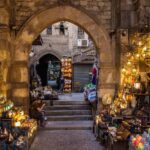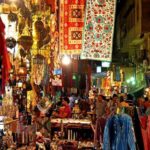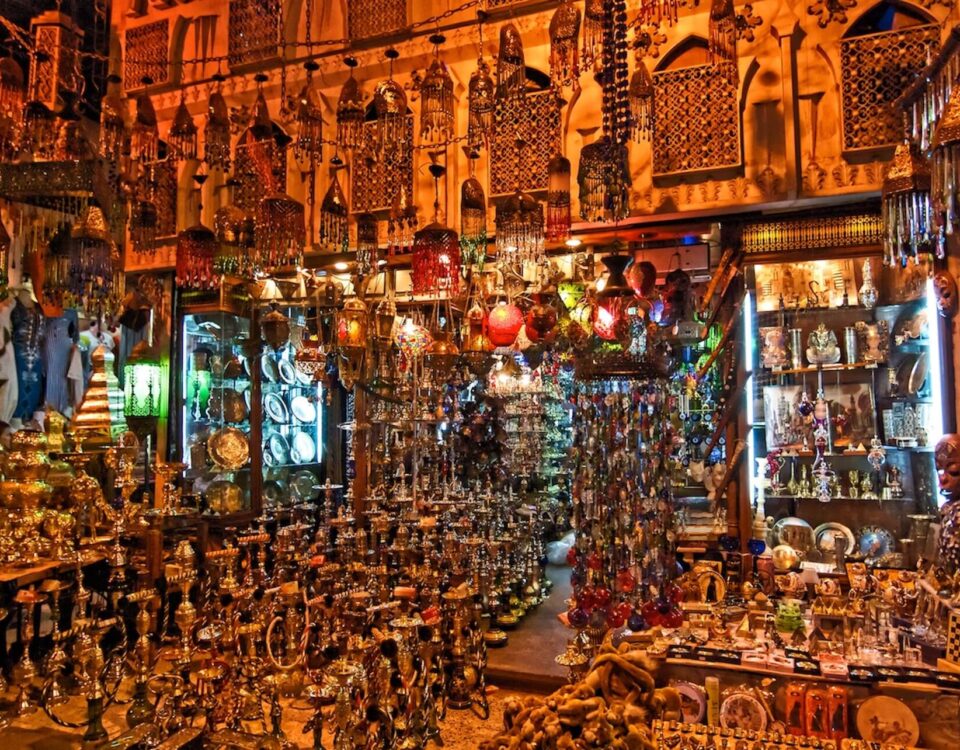
The Artisans of Khan el-Khalili: Exploring Egypt’s Handcrafted Heritage
November 4, 2025
Is Khan el-Khalili Worth Visiting? Honest Traveler Reviews and Local Insights
November 5, 2025Nestled in the heart of Cairo’s historic Islamic district, Khan el Khalili stands as one of Egypt’s most iconic bazaars, a labyrinth of narrow alleys brimming with vibrant colors, intricate crafts, and centuries-old architecture. For photographers, this bustling souk offers an unparalleled canvas to capture the soul of Egyptian culture. Whether you’re a seasoned professional or an enthusiastic amateur, Khan el Khalili photography promises a blend of street scenes, architectural marvels, and candid human moments that transport viewers straight into the Arabian Nights. In this guide, we’ll explore how to make the most of your photographic journey through this timeless market, from preparation to post-processing, ensuring your images reflect the bazaar’s authentic magic.
The Historical Allure of Khan el Khalili
To truly appreciate Khan el Khalili photography, understanding its rich history is essential. Established in the late 14th century during the Mamluk era, the bazaar was originally built as a caravanserai—a resting place for traders along the Silk Road. Over the centuries, it evolved into a major commercial hub, surviving Ottoman rule, British occupation, and modern tourism. Today, it’s a UNESCO-recognized site within Islamic Cairo, surrounded by mosques, madrasas, and ancient gates that add layers of depth to any composition.
The bazaar’s architecture is a photographer’s dream: ornate stone arches, wooden mashrabiya lattices, and towering minarets frame the chaotic energy below. As you wander, you’ll encounter stalls overflowing with handmade lanterns, spices, jewelry, and textiles—each item a potential focal point. The interplay of light filtering through these structures creates dramatic shadows and highlights, perfect for capturing the essence of Middle Eastern heritage. Khan el Khalili photography isn’t just about snapping pictures; it’s about immortalizing a living piece of history where past and present collide.
Why Khan el Khalili is a Photographer’s Paradise
What makes Khan el Khalili photography so captivating? It’s the sheer diversity of subjects. The market’s vibrant scenes—vendors haggling over copper pots, locals sipping tea in historic cafes, and tourists marveling at glittering souvenirs—offer endless opportunities for street photography. The colors are explosive: ruby-red spices piled high, turquoise lanterns glowing under the sun, and golden brassware reflecting the hustle.
Beyond the visuals, the bazaar evokes emotion. A single frame can tell stories of craftsmanship passed down generations or the daily rhythm of Cairo life. Compared to more sterile tourist spots, Khan el Khalili feels raw and authentic, allowing photographers to document genuine cultural interactions. For those interested in semantic SEO practices, terms like “Cairo bazaar photography” or “Egyptian market captures” naturally align with searches for immersive travel experiences, drawing in audiences eager for visual storytelling.
Preparing for Your Khan el Khalili Photography Adventure
Before diving into Khan el Khalili photography, preparation is key. Start with timing: Early mornings (around 9-10 AM) provide soft light and fewer crowds, ideal for wide-angle shots of empty alleys. Evenings after 5:30 PM transform the bazaar with illuminated lanterns, creating a magical glow for night photography. Avoid peak afternoon hours when the heat and throngs can overwhelm.
Pack light but smart. A comfortable backpack for your gear, water, and snacks will keep you energized. Research the layout using maps—focus on main entrances like Bab al-Badistan or Bab al-Ghuri for starting points. If you’re traveling solo, consider joining a guided tour for insider access to hidden corners, enhancing your Khan el Khalili photography without the hassle of navigation.
Top Spots for Khan el Khalili Photography
Khan el Khalili is vast, but certain locations stand out for their photogenic appeal. Here are some must-visit spots:
- Bab al-Ghuri Gate: This 16th-century archway is the bazaar’s iconic entrance, framed by towering stone walls and bustling stalls. Capture it at sunrise for ethereal light streaming through, or use it as a natural frame for street scenes beyond.
- Narrow Alleys and Souk Lanes: The heart of Khan el Khalili photography lies in its winding paths. Streets like Sharia al-Muizz are lined with colorful lanterns and spice shops—perfect for leading-line compositions that draw the eye deep into the frame.
- Al-Hussein Mosque Area: Adjacent to the bazaar, this mosque’s minarets and courtyards offer architectural details like intricate carvings and domes. Photograph from the square for panoramic views, or zoom in on worshippers for respectful candid shots.
- Naguib Mahfouz Cafe: Named after the Nobel laureate, this historic spot inside the bazaar is ideal for interior photography. The Ottoman-style decor, with wooden ceilings and antique lamps, provides a serene contrast to the outer chaos.
- Spice and Lantern Districts: Head to the sections specializing in perfumes or metalwork for macro opportunities. The vibrant hues and textures here make for stunning close-ups that embody the bazaar’s sensory overload.
These spots ensure a well-rounded portfolio, blending wide landscapes with intimate details.
Essential Tips and Techniques for Khan el Khalili Photography
Mastering Khan el Khalili photography requires blending technical skill with cultural sensitivity. Use a wide-angle lens (24-70mm) for capturing the bazaar’s scale, or a telephoto (70-200mm) for discreet portraits without intruding. Experiment with low-light settings in the evenings—ISO 800-1600 and a tripod for sharp, atmospheric shots.
For street photography, embrace the chaos: Anticipate moments like a vendor pouring tea or children playing. Burst mode helps capture fleeting expressions. Always ask permission before photographing people— a smile and basic Arabic phrases like “Mumkin sura?” (May I take a photo?) go a long way. To avoid common pitfalls, steer clear of harsh midday sun; instead, seek shaded areas for even lighting.
Post-processing can elevate your images: Boost vibrancy in colors to mimic the bazaar’s energy, or apply subtle vignettes to focus on central subjects. Software like Lightroom is perfect for enhancing the warm tones of Egyptian sunlight.
Cultural Etiquette and Practical Advice
Respect is paramount in Khan el Khalili photography. Dress modestly—cover shoulders and knees—to blend in and show courtesy. Be mindful of religious sites; photography inside mosques may require permission or be restricted.
Watch for scams: Some vendors might charge “photo fees” for shooting their stalls, so negotiate politely or move on. Stay hydrated in Cairo’s heat, and secure your gear against pickpockets in crowds. If you’re female or traveling alone, pairing with a local guide adds safety and opens doors to unique angles.
Gear Recommendations for Optimal Results
For Khan el Khalili photography, versatility is key. A DSLR or mirrorless camera like the Canon EOS R or Sony A7 series handles the dynamic range well. Lenses: A prime 35mm for streets, plus a macro for details. Don’t forget spare batteries, as the bazaar’s energy might keep you shooting for hours. A lightweight tripod or monopod stabilizes low-light shots, and a polarizing filter cuts glare from shiny metals.
Budget options? Smartphones with wide-angle attachments can yield impressive results, especially with apps for manual controls.
FAQs About Khan el Khalili Photography
What is the best time of day for photography in Khan el Khalili? Early morning or late afternoon/evening are ideal. Mornings offer soft light and fewer people, while evenings provide glowing lanterns for dramatic effects.
Do I need permission to photograph people in the bazaar? Yes, always ask. A friendly approach and respect for privacy will often lead to willing subjects and more authentic images.
What camera gear should I bring? A versatile zoom lens, extra batteries, and a sturdy bag. For professionals, a tripod; for casual shooters, a smartphone suffices.
Are there any restrictions on photography in Khan el Khalili? Generally no, but avoid sensitive areas like inside active mosques. Some stalls may request fees for close-ups.
How can I edit my Khan el Khalili photos for maximum impact? Focus on enhancing colors and contrast to capture the vibrancy. Tools like Adobe Lightroom help balance shadows and highlights from the bazaar’s varied lighting.
Final Words
Khan el Khalili photography is more than a hobby—it’s a gateway to understanding Egypt’s vibrant soul. From the historic arches of Bab al-Ghuri to the kaleidoscope of market stalls, every corner invites you to create images that resonate with cultural depth. As you embark on your own adventure, remember to immerse yourself fully: Haggle a little, sip some tea, and let the bazaar’s rhythm guide your lens. Whether you’re sharing on social media or building a portfolio, these captures will endure as testaments to one of the world’s most enchanting markets. Safe travels, and may your Khan el Khalili photography journey be filled with unforgettable frames.


